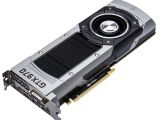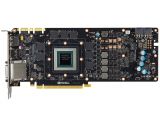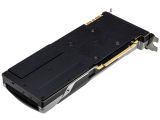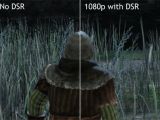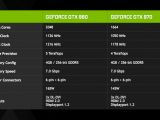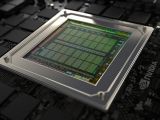After weeks and weeks of waiting and information hunting, NVIDIA has finally made the official introduction of its real Maxwell-based graphics cards. The GTX 750 (Ti) may have been released back in spring, but that mid-range board has nothing on the two, new high-end ones.
Maxwell is the codename of the newest GPU architecture from NVIDIA. Originally, it was supposed to be designed on the 20nm manufacturing process, but TSMC (NVIDIA and AMD's chip fabricator) failed to ramp up the node in time.
It forced the company to redesign the chip for the 28nm node, the same one used by Kepler video boards. The GeForce GTX 980 and GeForce GTX 970 are the result.
The technical specifications
The GeForce GTX 980 is a powerful beast, with a GM204-400 graphics processing unit featuring 2,048 CUDA cores, 64 ROPs, 128 TMUs, and a memory interface of 256 bits, which drives 4 GB of GDDR5 VRAM. The full transistor count is 5.2 billion, and the GPU clocks are of 1,126 MHz base / 1,216 MHz GPU Boost.
Now, admittedly, Kepler GK110 has more cores (2,880) and transistors (7.08 billion), as well as 240 TMUs instead of just 128.
However, Kepler also has a much larger die size (561 square mm vs. 398) and a far greater TDP (GTX 780 Ti runs on 250W instead of 165W like the GTX 980).
And at the end of the day, the GeForce GTX 980 should be just as good as – if not better than – the GTX 980 Ti, despite not being based on the GM200/GM210 GPU (which is being held in reserve). It's all thanks to certain technologies that NVIDIA came up with, but more on that later.
The GeForce GTX 970, meanwhile, has 1,664 CUDA cores, 104 TMUs, 64 ROPs, and 4 GB GDDR5 VRAM. The TDP should be the same 165W too. Speed-wise, we're looking at 1,050 MHz / 1,178 MHz base/boost. As for the VRAM, it works at 7 GHz on both video boards.
The new technologies from NVIDIA
To help the video boards use their resources at optimum efficiency and performance, NVIDIA developed several things.
For instance, Dynamic Super Resolution allows a game to output a higher resolution than your monitor expects, rendering a 4K image in the background and putting it through a 13 gaussian filter, then bringing it down to 1080p (as explained by Scott Herkelman, NVIDIA's GeForce division general manager). Basically, the tech fools your game into thinking it can go beyond maximum visual settings.
Some 4K user interface elements don't scale well though, so it might not work best on every game out there.
Another technology is Multi-Frame Sample Anti-Aliasing, or MFAA for short. Instead of better image quality, it improves performance on maxed out visual settings by sampling a pixel multiple times (like in normal anti-aliasing) but splitting the process over multiple frames. Performance can supposedly be improved this way by 30%, if you can believe it.
Finally, NVIDIA's GeForce GTX 980 and GTX 970 graphics cards support Voxel Global Illumination, a dynamic lighting technology that allows for realistic lighting in destructive environments (when buildings and crates are exploding around you in shooter or action games, for instance).
A final invention is VR Direct, which allows high frame rates and low latency on virtual reality devices like Oculus Rift. VR SLI lets GPUs individually serve each eye, Asynchronous Warp halves latency, and Auto Stereo expands game compatibility to headsets not originally meant for VR (no names were given, alas).
Availability and pricing
NVIDIA's video cards, both reference and custom-modeled versions from ASUS, EVGA, MSI, PNY, Gigabyte, and others, should show up in stores within the day. The GTX 980 has a price of $549 / €549 and the GTX 970 of $329 / €329.
Update January 27, 2015: Months later, it has come to light that a mistake in the reviewers' guide and a misunderstanding between the NVIDIA engineering and PR teams caused misinformation. The GTX 970 only has 56 ROPs and 1.7 MB of cache vs. GTX 980's 64 ROPs and 2 MB.
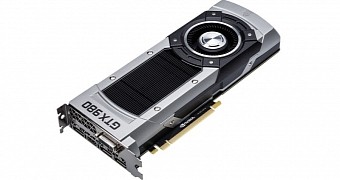
 14 DAY TRIAL //
14 DAY TRIAL // 
